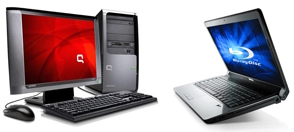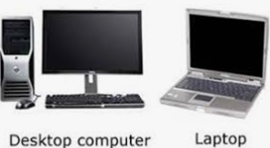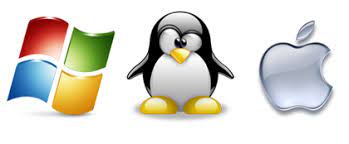Computer recommendations guide for Science Students in 2024¶

Students in the BSc programs make regular use of personal computers. All undergraduate students of the Faculty of Science have access to the Faculty's computer user area (NARGA/SCCUA) for 24 hours per day, 7 days per week. In NARGA all the software required in the BSc programs are available, as well as internet access and printers. However, many students are more productive if they have their own computer at their place of residence. Any assistance to students in obtaining a computer for personal use is therefore of substantial benefit.
Desktop or Laptop¶

Currently, laptops are by far the more popular choice. They are mobile, and the importance of battery power during load shedding cannot be overstated. A modestly priced laptop will be powerful enough for all the Science Faculty’s software requirements. Traditional desktop (non-mobile) systems have much more space than laptops, and thus far more powerful hardware can be crammed in there. For complex simulations, desktops are thus a good choice, but students will find that most departments have these available for their use, or they can make use of the desktops in the computer user areas.
Recommendation: Laptop
Windows, Macintosh, and Linux¶

Whilst many of the big software developers release their software for all available Operating System (OS) platforms, many of the smaller companies release it for Windows only, which is still the most popular operating system for personal use. Students will run into situations where the software will not natively work on their Mac or Linux system. Whilst there are workarounds for this it is often tedious and requires some degree of computer expertise. It should also be noted that Campus IT has limited support for Mac and Linux systems, and students with these systems can expect longer turnaround times when logging faults. Fortunately we have staff at NARGA who will be able to assist you with certain Linux issues and troubleshooting.
Recommendation: Windows System, but Mac or Linux can be used if the student does not mind the extra hassle.
Recommendation for Computer Science students: Dual boot system with Windows and Ubuntu
32-bit vs 64-bit¶
A few years ago, all operating systems were released as 32-bit. These operating systems can only address up to 4GB of RAM, far below the minimum requirement of many of the software packages used in the faculty. Moreover, some of the bigger software developers nowadays only release 64-bit versions of their software.
Recommendation: A 64-bit OS, 32-bit should not be considered
RAM Requirements (Random Access Memory)¶

When purchasing a computer and going for the lower-cost options it is advisable to confirm whether the RAM can be upgraded at a later stage as there is a chance that 32GB could be the minimum requirement in the next few years. When a computer runs out of RAM it starts using hard drive storage space for virtual memory. Thus, a fast hard drive is recommended on systems with smaller amounts of available RAM.
Absolute Minimum Requirement: 8GB of RAM, with the possibility of upgrade.
Recommendation: 16GB with the possibility of an upgrade.
CPU Requirements¶
Intel:¶

With Intel, there are three considerations to take: the core type, the core count, and the generation. As a general rule of thumb, the i3 will be the slowest, the i5 will be in the middle, and the i7 will be the fastest. Lately, however, CPUs have all become so fast that students will not notice a major difference in the running of software applications between the three types. More important is the core count, the more cores a CPU has the more calculations it can do at once. In 2024 four cores or more should be considered, however, two cores would still suffice. Lastly, the generation number indicates new Intel architecture releases. Generation 7 came out in 2017 and is the recommended minimum. Generation 9, which came out in 2019 has much faster graphics capabilities (covered in the next section) than generation 7 and should be considered a far better option.
Absolute minimum requirement: Any CPU that scores over 2000 points on https://www.cpubenchmark.net
Please note when you buy a laptop with an Intel chipset we do not recommend the Intel Celeron chip, however, look for the Intel Core i3, i5, i7, i9
Recommendation for Intel: 7TH Generation or higher i3, i5, i7 or i9 Intel CPU with at least four cores, 7TH Generation and higher strongly recommended
NOTE: It should be noted that Ryzen and core i3/i5/i7 are not the only makes of the respective manufacturers, but can be the baseline for comparison when considering other makes.
AMD:¶

AMD has mostly been lacking behind Intel but in 2019, they released the third-generation Ryzen CPUs that surpassed Intel for the most part and took the world by storm. These CPUs have high speeds, and low power usage and the versions that come with graphics have very powerful and fast graphic capabilities and generally were cheaper than their Intel counterparts. Second-generation Ryzen CPUs also have excellent speed and graphics capabilities.
Absolute minimum requirement: Any CPU that scores over 2000 points on https://www.cpubenchmark.net
Recommendation for AMD: Any second-generation Ryzen CPU with built-in graphics and four or more cores, but third-generation if costs allow.
Graphics Requirements¶
Computer graphics cards come in two main flavors integrated and dedicated. An integrated graphics card shares power and memory with the CPU and RAM, and whilst slower than a dedicated card, it is much cheaper. Dedicated cards are stand-alone powerhouses with their own RAM and CPUs, but are much, much more expensive, often out-costing all other components of a computer. These are usually in desktops (but can be in laptops too), and their usage often accompanies games and high-end graphics applications such as video editing. For student usage, an integrated graphics card that comes with a 2nd generation or higher AMD or a 6th generation or higher INTEL CPU would be adequate. It should be noted that from the 7th generation, Intel integrated graphics are much faster.
Absolute minimum requirement: Intel HD or UHD integrated graphics.
Recommendation: At least 2nd Gen AMD or 6th Gen Intel integrated graphics.
Hard drive Requirements¶
In the past, all hard drives had mechanical, moving parts, and these were notably slower than the more modern solid-state (SSD) and Non-Volatile drives (NVME) we have today. SSD and NVME drives are much, much faster and make an extreme difference to overall system speed compared to traditional drives, especially on low RAM systems. SSD drives will be sufficient for all student requirements and it is not yet necessary to purchase the far more expensive NVME drive, as the noticed difference in speed will be negligible. Students receive 1TB (terabyte) of cloud storage from the university, so hard drive size is not that much of an issue unless the students want to use the computer for other things apart from studying.
Absolute minimum requirement: 240GB Mechanical Hard Drive but SSD strongly recommended.
Recommendation: Solid State SSD Hard drive, 240GB and bigger
Summary of recommendation¶
(It should be noted that students can use lab computers to supplement their own devices, should it fall short for a particular program/application)
| Programme | Programme Leader |
|---|---|
| Laptop | Laptop |
| 64 Bit Windows Operating System | 64 Bit Windows Operating System |
| 8GB RAM, Upgradable | 16GB RAM, Upgradable |
| Intel Core i3 or i5 or AMD Ryzen 2nd Generation (Intel Celeron – not recommended) | 7th Generation or higher Core i7 Intel CPU, or AMD Ryzen 2nd Generation or higher (Intel Celeron – not recommended) |
| 240GB and bigger Mechanical Hard drive | 240GB and bigger SSD Hard Drive |
| Intel HD or UHD Integrated Graphics | Integrated graphics that come with the recommended CPU above |
Created: 2024-02-06